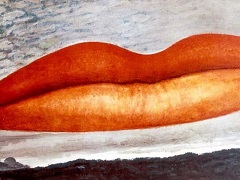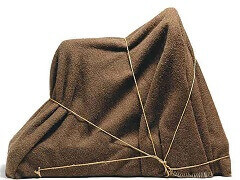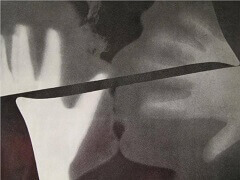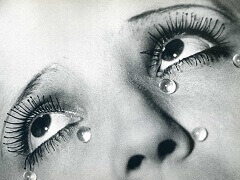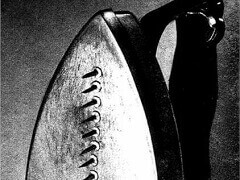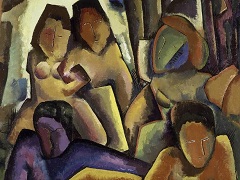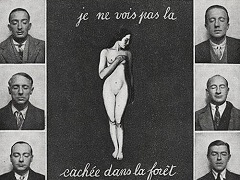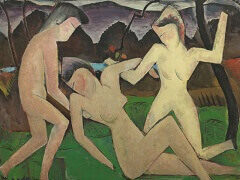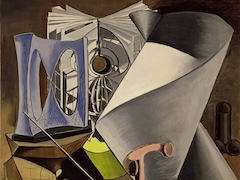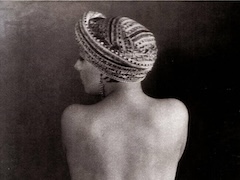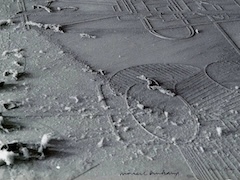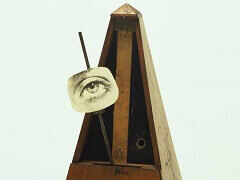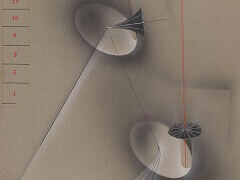Emak Bakia, 1926 by Man Ray
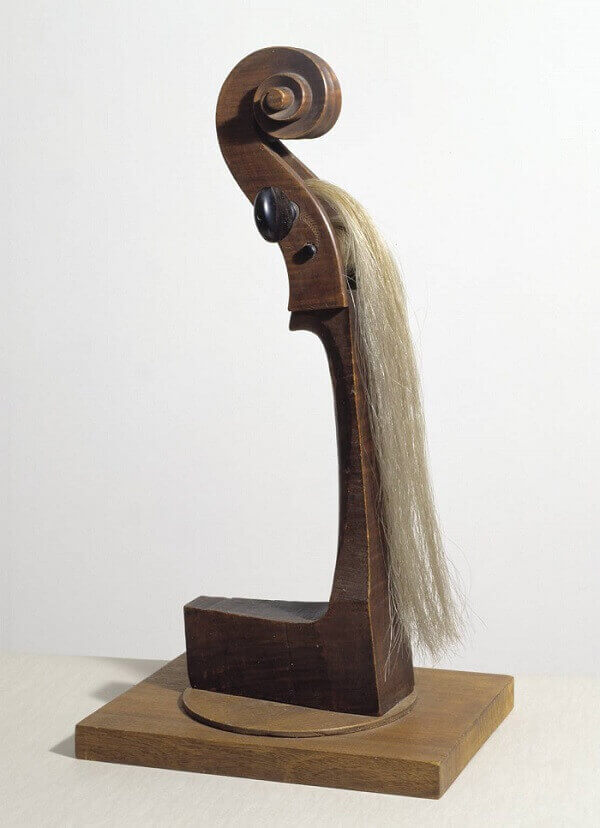
Emak Bakia, 1926, remade 1970, consists of an upright wooden part that resembles the neck of a 'cello but which has had its strings replaced by unplayable, loose horsehair. The two locks of hair flow down the wooden neck and endow the piece with a sense of life. The original work consisted of the neck of an old 'cello picked up in a Paris flea market and the horsehair of the bow used for playing the instrument. Arturo Schwarz, Man Ray's dealer and author of a monograph on him, has written, 'The 'cello-neck looked worn and weathered, and Man Ray felt the urge to point humorously to its age: since it has grown old, he gave it a long white beard'. Schwarz adds that the spiral form of the 'cello probably held a fascination for the artist too. Man Ray once said,
Nature, from the sea-shell to the galaxy, is full of spirals: when I was a young man I was already obsessed by this form; when working as a draughtsman I was fascinated by curves, spirals, parabolas, hyperbolas."
The work's title, which means in Basque 'leave me alone', is the name of a house owned by Rose and Arthur Wheeler near Biarritz where Man Ray stayed and made an avant-garde film of the same name in 1925. This film, which Man Ray termed a 'cinepoem', was first shown in November 1926, and was hailed as a great piece of cinematography that melded aspects of dada and surrealism. The original version of the object was shown briefly in the film but was lost subsequently.
An edition of ten examples was made in silver in 1970 by the Studio Marconi, Milan, the same year Man Ray made this second original using wood. According to his assistant, Lucien Treillard, Man Ray did not particularly like the edition which had made the object appear too precious. He instructed Treillard to source materials in music shops. The piece is unsigned but listed in the 1983 Paris catalogue of Man Ray's objects.

